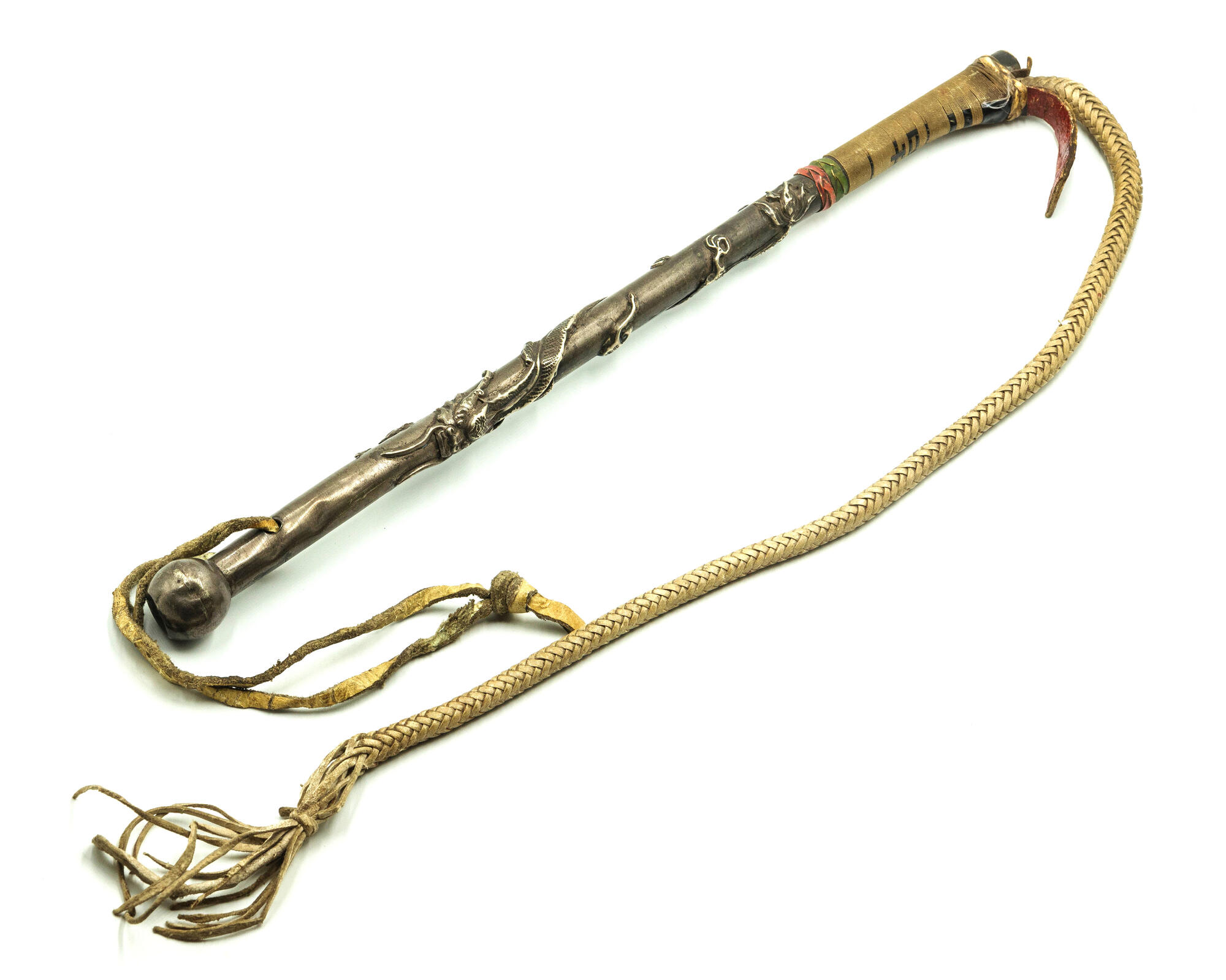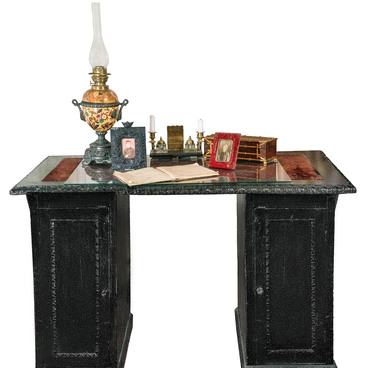The whip from the collection of the house-museum was presented to Dmitry Mamin-Sibiryak by the theater director and playwright Vladimir Nemirovich-Danchenko. In 1904 — 1905, he served as a war correspondent in Manchuria, in the east of modern China, and brought souvenirs for the writer from there.
Until 1916, the whip was kept in the Ural Society of Natural Science Lovers. It was donated to the Society by the writer’s last wife, Olga Guvale. Later, the collection became a part of the Sverdlovsk Regional Museum of Local History. In 1946, it was transferred to the just opened Mamin-Sibiryak House-Museum.
The whip consists of a rod and a 36-centimeter-long metal handle. It is ornamented with dragon plates and two braided leather straps in red and green. The handle’s tip is ball-shaped. At its end, there is a hole for a belt, which allows to wear the whip on the hand.
The rod was 53 centimeters long, and it was made of thin strips of light-colored leather that were twisted together and knotted at the end. In the East, the whip was considered a cold weapon used by the military. They used it to whip their enemies.
In addition to the whip, Nemirovich-Danchenko brought the writer a carved frame for photographs, an incense burner with an idol figurine, and glasses in a case — these items are also kept in the collection of the house-museum now.
At the turn of the 19th — 20th centuries, Dmitry Mamin-Sibiryak was fond of Oriental culture and mythology, so he enthusiastically accepted the gifts. In 1898, he wrote his “Oriental Legends”, a cycle of five texts: “Maya”, “Baymagan”, “The Swan of Khantygaya”, “Tears of the Tsarina”, “The Tale of the Siberian Khan Kuchum”. They are united by the theme of love.
At the time, Mamin-Sibiryak had a passionate relationship with the dramatic actress Maria Abramova.
Until 1916, the whip was kept in the Ural Society of Natural Science Lovers. It was donated to the Society by the writer’s last wife, Olga Guvale. Later, the collection became a part of the Sverdlovsk Regional Museum of Local History. In 1946, it was transferred to the just opened Mamin-Sibiryak House-Museum.
The whip consists of a rod and a 36-centimeter-long metal handle. It is ornamented with dragon plates and two braided leather straps in red and green. The handle’s tip is ball-shaped. At its end, there is a hole for a belt, which allows to wear the whip on the hand.
The rod was 53 centimeters long, and it was made of thin strips of light-colored leather that were twisted together and knotted at the end. In the East, the whip was considered a cold weapon used by the military. They used it to whip their enemies.
In addition to the whip, Nemirovich-Danchenko brought the writer a carved frame for photographs, an incense burner with an idol figurine, and glasses in a case — these items are also kept in the collection of the house-museum now.
At the turn of the 19th — 20th centuries, Dmitry Mamin-Sibiryak was fond of Oriental culture and mythology, so he enthusiastically accepted the gifts. In 1898, he wrote his “Oriental Legends”, a cycle of five texts: “Maya”, “Baymagan”, “The Swan of Khantygaya”, “Tears of the Tsarina”, “The Tale of the Siberian Khan Kuchum”. They are united by the theme of love.
At the time, Mamin-Sibiryak had a passionate relationship with the dramatic actress Maria Abramova.



